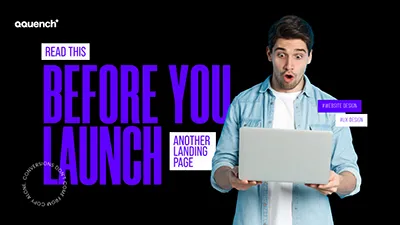
LMS Doesn’t Mean Learning: What’s Broken (and What You Can Actually Fix)
If your LMS courses aren’t delivering impact, you’re not alone. Learn why most online training fails—and how to redesign courses that actually stick.
LMS ≠ Learning. Let’s Talk About It.
You’ve spent months setting up your LMS.
You launched your training modules.
You ran the reports.
But no one’s logging in. Or they’re dropping off halfway. Or they’re completing the course and still asking, “So… what do I do next?”
Sound familiar?
You’re not alone.
At Qquench, we see this play out all the time. It’s not your team. It’s not your tech. It’s the way LMS courses are typically designed.
Let’s break down why most LMS content fails—and how we help our clients turn that around.
Top Reasons LMS Courses Fail (and Learners Tune Out)
1. Content Dump Instead of Design Thinking
Most LMS courses are built like a folder—not a learning journey.
Just because you have a lot to say doesn’t mean your learner needs to hear it all at once.
What works: Short bursts. Structured pacing. One objective per screen.

2. No Emotional Hook = No Memory

If learners don’t feel something, they won’t remember anything.
Dry tone? Zero relatability? You’ve lost them.
What works: Characters. Story arcs. A little humour. A little realness.
3. Wrong Metrics = Wrong Focus
If your success metric is “course completed,” you’re already off track.
What works: Measure application. Confidence. Behavior change.
Not just clicks.

What Great LMS Content Does Differently
It Centers the Learner, Not the Content
Every decision we make at Qquench starts with this question:
“What would make this easier, clearer, or more meaningful for the learner?”
That means:
- Less text
- More choice
- A voice that sounds like a human, not a legal doc
- Feedback that teaches, not tests

It’s Designed Like a Product, Not a PowerPoint

Courses that convert have UX. Narrative flow. Visual breathing room.
They respect the learner’s attention span—and their intelligence.
The Qquench Fix: Make LMS Training Feel Like a Real Experience
Here’s how we help fix underperforming LMS courses:
- Audit what’s actually being retained
- Re-script with microcopy that builds confidence
- Add interaction that matters (not just click-to-continue fluff)
- Introduce characters and story tension
- Optimize for mobile—because not everyone’s on a desktop
Whether we’re refreshing content or rebuilding it from scratch, we don’t aim for “course completion.”
We aim for course commitment.
You Don’t Need More Tech. You Need Better Design.
Your LMS is just a platform.
The learning? That comes from how it’s designed.
So if your courses feel flat or forgettable, don’t blame the tool.
Blame the template.
And then—let’s fix it.




